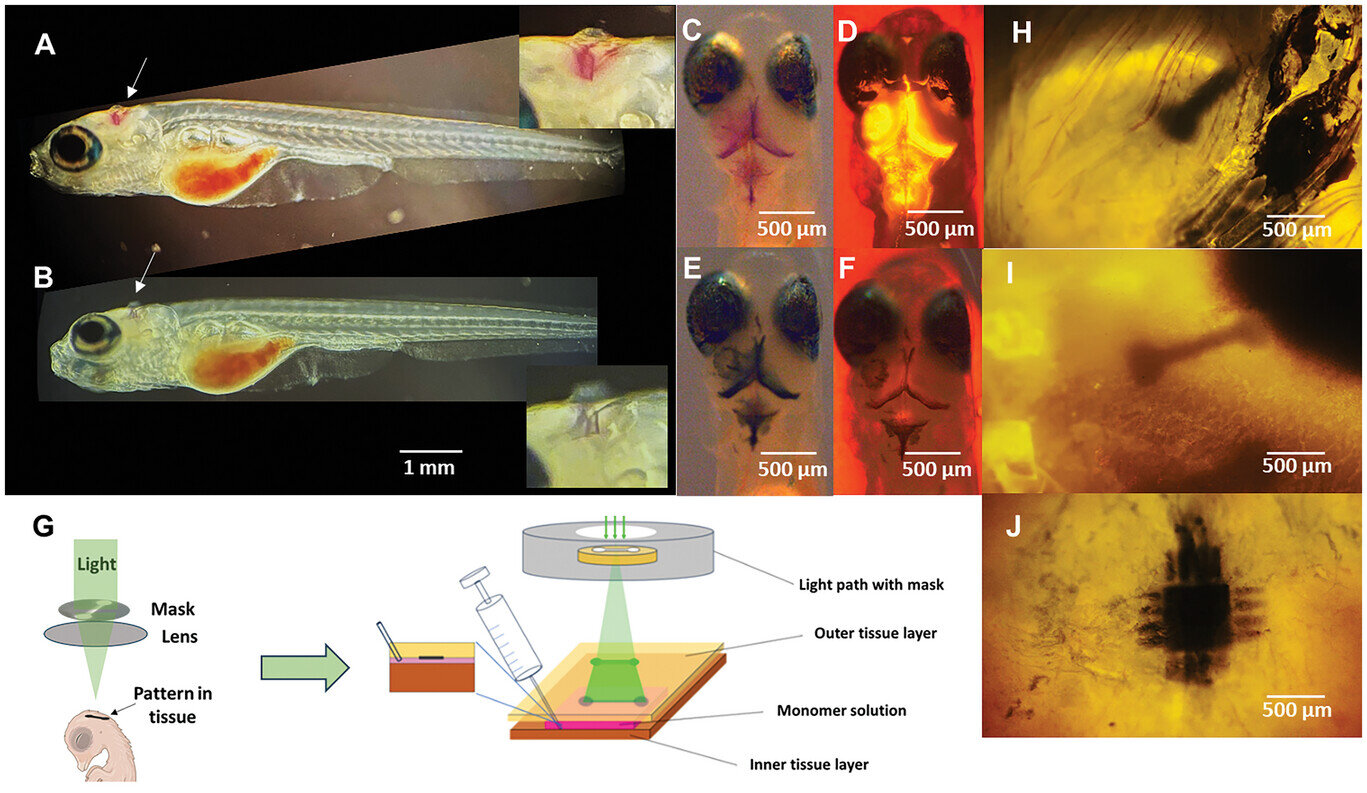Bioelectronics research and development of implants made of electrically conductive materials for disease treatment is advancing rapidly. However, bioelectronic treatment is not without complications. Researchers at Lund University in Sweden have taken another step forward by developing a refined method to create detailed and tissue-friendly bioelectronics.
In a study published in Advanced Science, the researchers describe how they can use light to create electrically conductive materials directly in the body, showing promising results in animal trials.
Bioelectronics is successfully used for treating heart arrhythmia, epilepsy, and neurodegenerative diseases like Parkinson’s, to name a few. However, it’s well known that today’s bioelectrodes and implantation methods require the tissue to adapt to the electrodes, rather than the other way around. This can lead to complications.
Roger Olsson, professor of chemical biology and drug development at Lund University, explains that current bioelectrodes often lead to complications like inflammation, scarring, and mechanical mismatch, especially in soft tissues like the brain.
“Our goal is to create biocompatible solutions that seamlessly integrate with the body. This study shows that we are on the right path.”
To achieve this, the researchers have developed a so-called photopolymerization process suitable for living organisms. The method uses light-sensitive materials as building blocks to form soft, conductive structures directly in the body. These structures can be tailored to integrate seamlessly with soft tissues like the brain.
“When the tissue is exposed to light—blue, green, or red—a rapid reaction occurs within five to 30 minutes, forming a soft material, a hydrogel, that can conduct electricity. This material consists of so-called polymer structures and water,” explains Fredrik Ek, the study’s lead author.
Fredrik Ek, also a researcher in chemical biology and drug development at Lund University, adds that this technique of using light allows the forming of detailed bioelectronic structures that integrate with the body’s cells.
“This has not been shown before for electrodes formed directly in tissues. The created structures are tissue-friendly and biocompatible, making them more suitable than today’s bioelectronics for interacting with biological systems, such as regulating the electrical signals of nerves. This could be significant for treating neurological and neurodegenerative diseases,” says Fredrik Ek.
The researchers envision that this technology could transform the future of bioelectronic therapies. Unlike traditional implants, these light-created bioelectrodes are minimally invasive during implantation and don’t require surgical removal, because they naturally degrade after use.
The next step is to move from early trials in zebrafish and chicken embryos to evaluating the concept in larger animal models.
More information:
Fredrik Ek et al, In Vivo Photopolymerization: Achieving Detailed Conducting Patterns for Bioelectronics, Advanced Science (2024). DOI: 10.1002/advs.202408628
Provided by
Lund University
Citation:
Using light to create bioelectronics inside living organisms (2024, November 22)
retrieved 24 November 2024
from https://phys.org/news/2024-11-bioelectronics.html
This document is subject to copyright. Apart from any fair dealing for the purpose of private study or research, no
part may be reproduced without the written permission. The content is provided for information purposes only.


